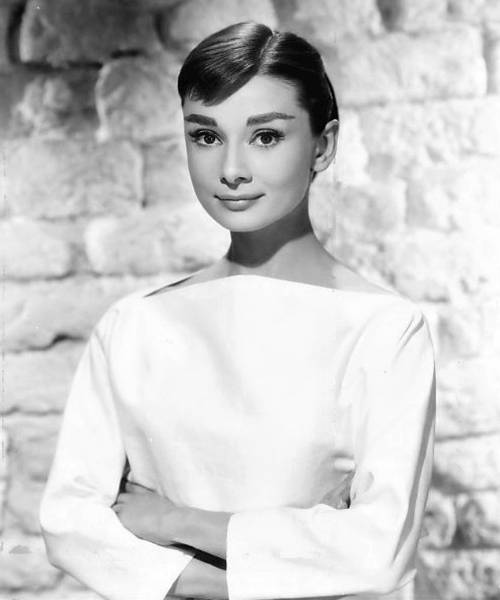FAQ About Audrey Hepburn

Who was Audrey Hepburn?
Audrey Hepburn was an iconic British actress and humanitarian, known for her roles in classic films such as Breakfast at Tiffany's, Roman Holiday, and My Fair Lady. She was also recognized for her work with UNICEF, significantly contributing to efforts to help children in need around the world.

What are some of Audrey Hepburn's most famous movies?
Audrey Hepburn starred in several classic films, including Breakfast at Tiffany's, Roman Holiday, My Fair Lady, Sabrina, and Funny Face. Her performances are still celebrated today for their elegance, charm, and depth.

Did Audrey Hepburn win any awards for her acting?
Yes, Audrey Hepburn won numerous awards throughout her career, including an Academy Award for Best Actress for her role in Roman Holiday in 1953. She also received several Golden Globe and BAFTA awards, and was recognized with a Special Tony Award for her contribution to the arts.

How did Audrey Hepburn contribute to humanitarian efforts?
Audrey Hepburn dedicated much of her later life to humanitarian efforts, particularly through her role as a UNICEF Goodwill Ambassador. She traveled to numerous countries, focusing on providing aid to children affected by war and poverty, and her work helped to raise global awareness and funds for these causes.

What was Audrey Hepburn's style known for?
Audrey Hepburn's style was characterized by its timeless elegance and simplicity. She popularized the "little black dress," and her fashion sense often featured clean lines, sophisticated hairstyles, and understated yet chic accessories. She is considered a fashion icon, influencing style trends even today.

When and where was Audrey Hepburn born?
Audrey Hepburn was born on May 4, 1929, in Ixelles, Brussels, Belgium. She spent her early years moving between the Netherlands, England, and Belgium due to her father's work.

How did Audrey Hepburn become famous?
Audrey Hepburn rose to fame through her performance in the Broadway play "Gigi," which led to her breakthrough film role in Roman Holiday. Her portrayal of Princess Ann won her an Academy Award and skyrocketed her to international fame.

What was Audrey Hepburn's role in UNICEF?
Audrey Hepburn served as a UNICEF Goodwill Ambassador starting in 1989. Within this role, she traveled to over 20 countries, advocating for children in need and participating in numerous fundraising campaigns. Her humanitarian legacy is considered one of her most significant contributions.

Is Audrey Hepburn considered a fashion icon?
Yes, Audrey Hepburn is considered a major fashion icon. Her collaborations with designers like Hubert de Givenchy helped define her elegant and timeless style. Her influence on fashion is still evident today as she remains a source of inspiration for designers and fashion enthusiasts globally.

Did Audrey Hepburn have any children?
Yes, Audrey Hepburn had two sons. Her first son, Sean Hepburn Ferrer, was born in 1960 with her first husband, Mel Ferrer. She had her second son, Luca Dotti, in 1970 with her second husband, Andrea Dotti.

What were some of Audrey Hepburn's achievements outside of acting?
Apart from her successful acting career, Audrey Hepburn was celebrated for her humanitarian work with UNICEF. She received the Presidential Medal of Freedom and the Jean Hersholt Humanitarian Award posthumously for her philanthropic efforts.

What is Audrey Hepburn's legacy?
Audrey Hepburn's legacy includes her timeless contributions to film and fashion, as well as her impactful humanitarian work. She is remembered for her grace, elegance, and dedication to helping others, particularly underprivileged children around the world.

Where and when did Audrey Hepburn pass away?
Audrey Hepburn passed away on January 20, 1993, in Tolochenaz, Switzerland, after battling a rare form of abdominal cancer. Her contributions to film, fashion, and humanitarian causes continue to be celebrated.

What is one of Audrey Hepburn's most iconic fashion moments?
One of Audrey Hepburn's most iconic fashion moments is her appearance in Breakfast at Tiffany's wearing the classic little black dress designed by Hubert de Givenchy. This look has become synonymous with elegance and is considered one of the most famous outfits in cinematic history.

How did Audrey Hepburn's early life influence her career?
Audrey Hepburn's early life, particularly her experiences during World War II, influenced her outlook and resilience, which she later brought to her acting and humanitarian work. Her multicultural upbringing in Europe also contributed to her unique charm and persona in Hollywood.

Did Audrey Hepburn do any roles on Broadway?
Yes, Audrey Hepburn made her Broadway debut in "Gigi" in 1951. Her performance in this play led to her discovery by Hollywood, eventually launching her successful film career.

What organizations recognized Audrey Hepburn for her humanitarian work?
Audrey Hepburn was recognized by several organizations for her humanitarian work. Besides receiving the Presidential Medal of Freedom and the Jean Hersholt Humanitarian Award, she was honored with numerous accolades from UNICEF for her dedication to helping children worldwide.

How did Audrey Hepburn impact the entertainment industry?
Audrey Hepburn's impact on the entertainment industry is profound. She broke the mold of the typical Hollywood starlet with her unique elegance and charm, making her one of the most beloved actresses of all time. She inspired generations of actors and artists with her talent and moral integrity.

What was Audrey Hepburn's relationship with designer Hubert de Givenchy?
Audrey Hepburn and designer Hubert de Givenchy had a close professional and personal relationship. He created numerous iconic looks for her films, and she became his muse, helping to cement his place in fashion history. Their collaborations are legendary in the fashion world.

What challenges did Audrey Hepburn face in her life?
Audrey Hepburn faced several challenges, including health issues and personal struggles. During World War II, she experienced the hardships of Nazi occupation in the Netherlands, which deeply affected her outlook. Additionally, she battled cancer later in life, which ultimately led to her passing in 1993.
